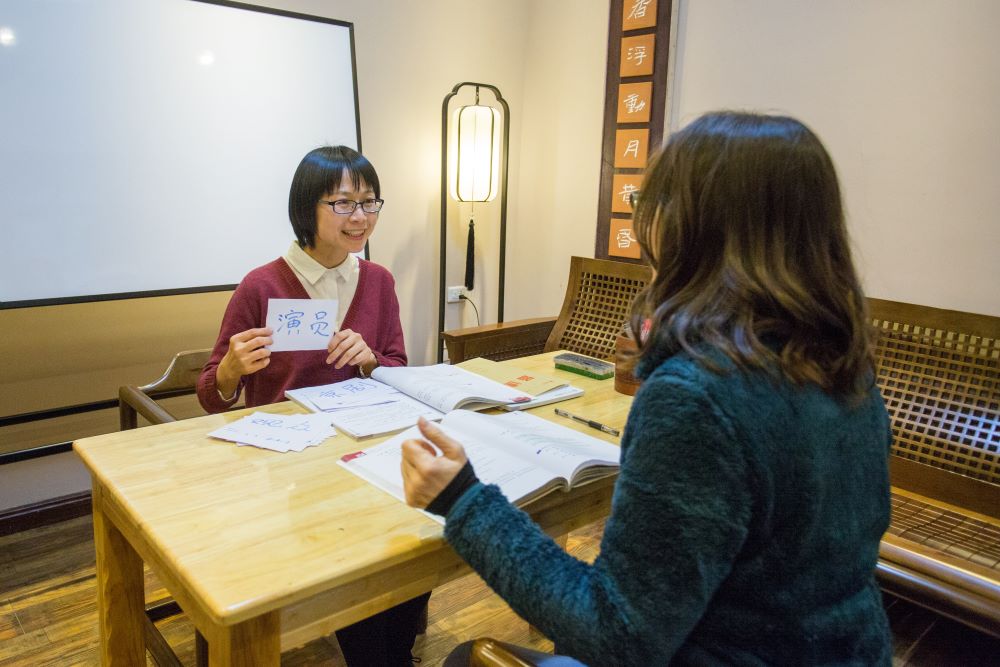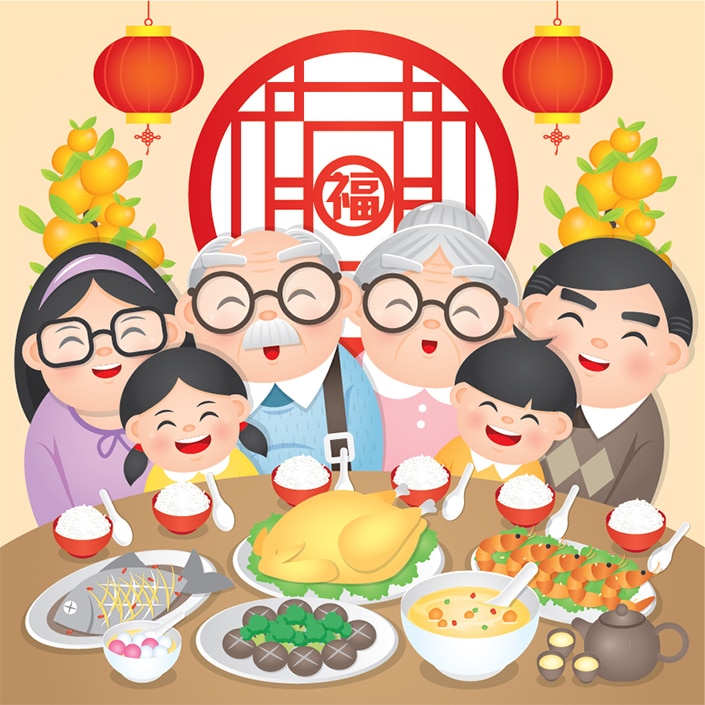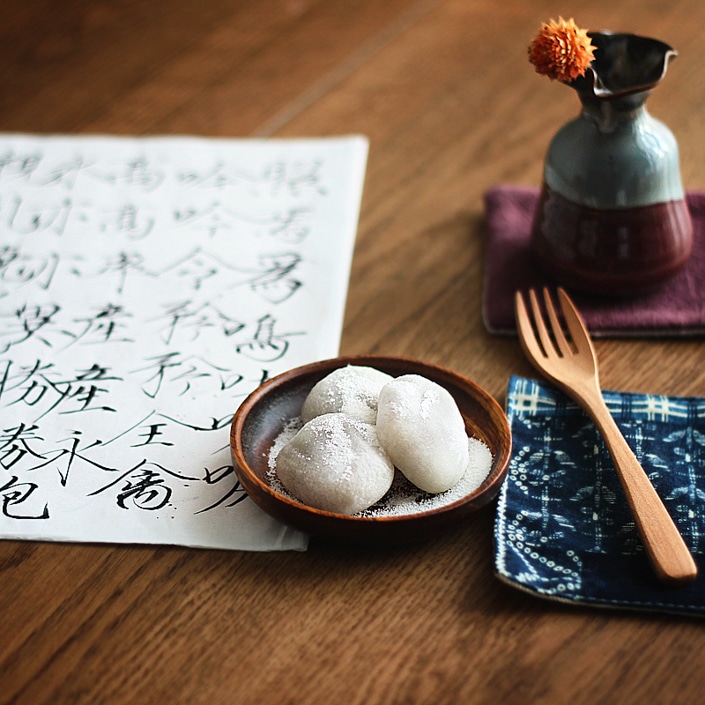Guide to Tone Changes in Mandarin Chinese
Learn Chinese in China or on Zoom and gain fluency in Chinese!
Join CLI and learn Chinese with your personal team of Mandarin teachers online or in person at the CLI Center in Guilin, China.
You may have heard that Chinese is a tonal language, but did you know that in addition to the basic tones, there are many tone changes in Mandarin Chinese? Read on to discover the essential tone change rules that every language student needs to know.
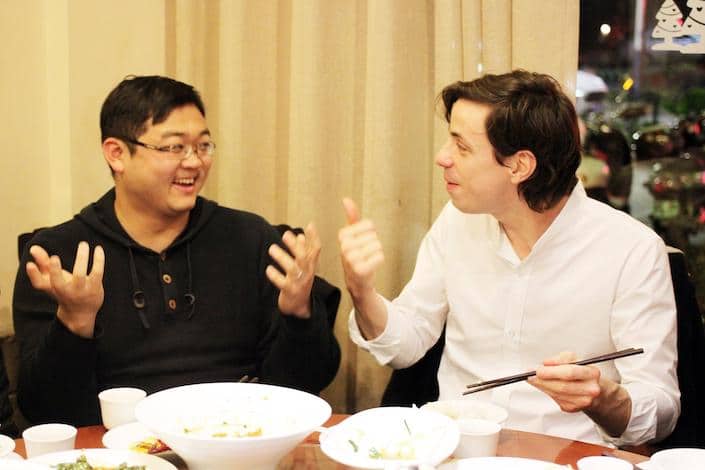
Table of Contents
- What tones exist in Mandarin?
- What are Mandarin tone changes?
- The 3 most important Mandarin tone change rules
- Other tone changes
- How are tone changes in Mandarin Chinese written?
- Why learn tone changes?
- How to effectively learn tones and tone changes
- An integral part of Mandarin Chinese
- Tone change vocabulary
What tones exist in Mandarin?
Standard Mandarin, or Putonghua, is most commonly said to have four tones (四声 sìshēng). This number is sometimes given as five or even six depending on whether or not you count the neutral tone and the half-third/low-guttural tone.
One of the reasons that many Mandarin learners struggle with tones (声调 shēngdiào) is that they sometimes change depending on the context in which they’re used. To understand these tone changes, we first need to understand the original, unchanged versions of Standard Mandarin tones.
The Standard Mandarin tones
The following tones are found in Standard Mandarin Chinese:
- First tone: The first tone 阴平 (yīnpíng), usually called 第一声 (dìyīshēng), is steady and level, meaning it doesn’t rise or fall. It’s generally also described as a high tone. The word 高 (gāo; high, tall) is pronounced using the first tone.
- Second tone: The second tone 阳声 (yángpíng), usually called 第二声 (dì’èrshēng), is a rising tone. The word 茶 (chá; tea) is pronounced using the second tone.
- Third tone: The third tone 上声 (shàngshēng), usually called 第三声 (dì sān shēng), is most commonly taught as a dipping tone that falls and then rises, as in 买 (mǎi; to buy).
Note that when combined with other syllables, the third tone frequently undergoes major pronunciation changes. Due to this fact, some authors argue that in addition to the third tone, there exists another tone, called the half-third tone. This half-third tone is a low-guttural tone that falls slightly but does not come back up (see the section on Third Tone Changes below for more information).
- Fourth tone: The fourth tone 去声 (qùshēng), commonly referred to as 第四声 (dìsìshēng), is a falling tone. The word 树 (shù; tree) is pronounced using the fourth tone.
- Neutral tone (sometimes called the fifth tone): The neutral tone 轻声 (qīngshēng) is weak and unstressed in the mid-flat range. It frequently appears as the last syllable of disyllabic Chinese words, such as 东西 (dōngxi; thing), and never appears as the first syllable. Some linguists don’t consider the neutral tone to be an actual tone, but most learners hear it as one.
For a child with a higher voice, the tones shift higher together. And for a baritone with a low voice the tones shift lower together. Thus not everyone’s first tone will start at the same level, but it should stay high and flat.

Mandarin is commonly said to have four tones, but some people say there are actually five or even six.
How are tones written in Mandarin?
The most common Mandarin Chinese romanization system is pinyin. In this system, tone marks are written above the syllables to which they should be applied.
Here’s an example of a sentence written in Chinese characters: 我想去桂林。Now here’s the same sentence written in pinyin: Wǒ xiǎng qù Guìlín.
Occasionally, tones are written using numbers. In this system, the first tone is written using a 1 after the corresponding syllable (ex. 妈 ma1), the second tone with a 2 (ex. 林 lin2) and so on. A 5 or 0 indicates the neutral tone.
There are even color-coding systems. Pleco colors the tones as 1st= red, 2nd= green, 3rd= blue, 4th= purple/pink, and 5th= grey
Unfortunately, it isn’t possible to know which tone to use just by looking at an unfamiliar Chinese character. Therefore, it’s best to download a Chinese dictionary like Pleco onto your phone to check when needed.

You’ll need a good dictionary to know which tones to use when speaking Chinese
The importance of tones in Mandarin
Tones in Mandarin are extremely important and shouldn’t be ignored. It’s true that if you mix up your tones while trying to say something very basic or obvious, Chinese people may still be able to guess your meaning based on context.
If, however, you’re trying to communicate something specific without the help of gestures or contextual clues (like when you’re on the phone), using tones is absolutely essential if you want to be understood.
In cases where the pinyin spelling looks the same, differences in tone represent the only way to distinguish one word from another aside from looking at the character itself.
For example:
- 外教 (wàijiào; foreign teacher), 外交 (wàijiāo; diplomacy), 崴脚 (wǎijiǎo; to sprain one’s ankle)
- 教师 (jiàoshī; teacher), 教室 (jiàoshì; classroom), 礁石 (jiāoshí; reef)
The above examples show why you can only ignore tones at your own risk!

Without correct tones, 外教 (wàijiào; foreign teacher) can end up sounding like 崴脚 (wǎijiǎo; to sprain one’s ankle).
What are Mandarin tone changes?
Tone changes in Mandarin are referred to as 变调规则 (biàndiào guīzé) in Chinese. They’re also sometimes called tone sandhi, which is a general term used by linguists to describe tone changes that occur in response to the way adjacent words or syllables are pronounced.
Tone changes in Mandarin Chinese are contextual. Chinese characters all have their own “original” tones, but when placed next to other characters, some of these original tones can change.
The 3 most important Mandarin tone change rules
Some tone changes are optional, while others are obligatory. The three most important mandatory tone change rules are listed below:
1. Third tone changes
The third tone is one of the hardest tones to master. This is perhaps because it almost never appears in its original form as a dipping tone, except when pronounced in isolation. When the third tone is combined with other characters, it almost always undergoes a tone change.
The basic mandatory rules for tone changes involving the third tone are:
- When two consecutive third tones appear in a group, the first third tone changes to a second tone. This phenomenon happens frequently. The most famous example occurs in the Chinese greeting 你好 (nǐhǎo), which is the first Chinese word most students learn. As third tone characters, both 你 (nǐ) and 好 (hǎo) are pronounced with a dipping third tone in isolation. Because of this tone change rule, 你好 is pronounced “níhǎo.” However, the pinyin for 你好 is still written nǐhǎo (see section on how tone changes are written below).
- If several third tones appear in a row, only the last one in the group is actually pronounced as a third tone. The others change to second tones. For example, the name of the popular Chinese cold medicine 999 contains a series of three third tones (九九九 jiǔjiǔjiǔ). When pronounced, though, the first two third tones will change to second tones so that the name actually becomes “jiújiújiǔ.”
- When used almost anywhere except after another third tone or by itself), the third tone is pronounced as a low tone that falls slightly without rising again. In other words, when it comes after the first, second or fourth tone. So the third tone is a low-guttural tone the majority of the time.
These third tone changes may sound complex and hard to remember. It may help to simply realize that as a result of these changes, the most common pronunciation of the third tone in practice is actually as a low, slightly falling tone, not as a dipping tone.
The fact that the third tone is almost never pronounced as a dipping tone has led some people to suggest that teachers should change the way they teach the third tone. Instead of describing it as a dipping tone and then explaining the exceptions to this rule, they argue that teachers should directly tell students the third tone is a low tone.
Those who hold this view argue that understanding the dipping tone as a tone change, not as the original pronunciation of the third tone, could help improve students’ pronunciation.
2. Tone changes with 不 (bù)
The next obligatory tone change rule involves the commonly used character 不 (bù) which means “not” or “no” in Chinese:
- The original tone of the character 不 (bù) is fourth tone. When followed by another fourth tone, however, 不 (bù) is pronounced as a second tone. For example, the official pinyin for 不对 (bùduì; incorrect) consists of two consecutive falling tones. However, when pronounced, the tone of 不 (bù) changes to a rising second tone. Therefore, the actual pronunciation of 不对 is “búduì.”
In all situations aside from the one outlined above, 不 (bù) maintains its original fourth tone.
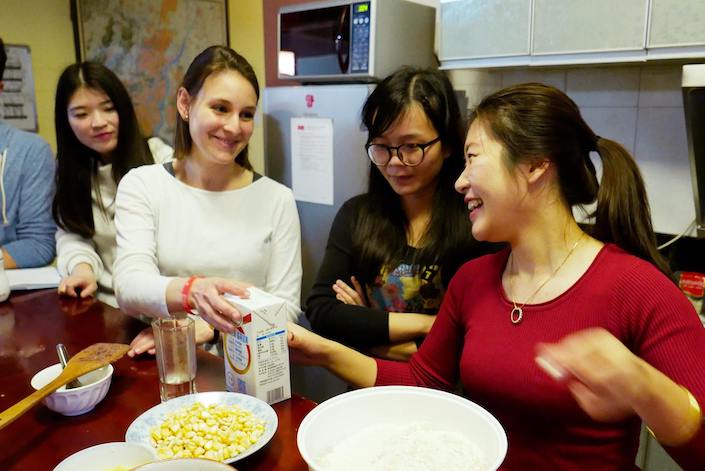
Applying tone changes to commonly used Mandarin words like 不 (bù) can help make your spoken Chinese sound more authentic.
3. Tone changes with 一 (yī)
Another commonly used character that’s subject to frequent mandatory tone changes is 一 (yī), which is the Chinese character meaning “one.”
Like 不 (bù), 一 (yī) is a Mandarin word that Chinese speakers use on a regular basis. Its original tone, which is the flat or level first tone, is most commonly used when pronounced in isolation. 一 (yī) also retains its original flat tone when being used as an ordinal number or as a regular number appearing in everyday contexts like addresses and dates.
Otherwise, the following mandatory tone change rules apply:
- When followed by a fourth tone, 一 (yī) changes from first tone to second tone. In this way, it behaves a bit like 不 (bù). For example, in the common construction 一个 (yīgè), which means one (of something), 一 (yī) is followed by a fourth tone. Therefore, as a result of this tone change rule, the pronunciation will change to “yígè.”
- If 一 (yī) comes before anything other than a fourth tone, it changes from first tone to fourth tone. For example, in the common construction 一起 (yīqǐ), 一 (yī) is followed by a second tone and therefore changes to the fourth tone when pronounced, becoming “yìqǐ.”

Applying tone changes correctly will help Chinese people understand your Mandarin better.
Other tone changes
In addition to the mandatory rules above, Mandarin also includes optional context-dependent tone change rules that some native Chinese speakers employ.
These optional tone changes involve things like subtle changes to the way the first fourth tone is pronounced when followed by another fourth tone. Since they’re optional, we won’t spend any more time on them here in an effort to avoid creating unnecessary confusion.
How are tone changes in Mandarin Chinese written?
Unfortunately, tone changes in Mandarin Chinese are generally not written down. You will usually not see them notated in pinyin.
This is because, while certain tones sometimes change in various different ways, these context-dependent changes don’t alter the original tones that characters have when written in isolation.
Writing each character’s original tone in pinyin regardless of its context is done to make it easier to identify each character’s original tone.

Tone changes in Mandarin are not written down, a fact which many beginners find frustrating.
Why learn tone changes?
Learning about tone changes is an important part of learning Mandarin. That said, a surprising number of Chinese language students are either unaware or only vaguely aware of Mandarin tone change rules.
One reason for this is the fact that some Chinese teachers are inclined to gloss over the existence of tone change rules for fear of intimidating beginner students. While this approach is understandable, avoiding teaching tone change rules does students a disservice in the long run.
If you’re serious about learning Mandarin and plan to continue your studies beyond an elementary level, you should make sure to start learning and applying tone change rules from the very beginning. Otherwise, you’ll find yourself forced to expend a great deal of time and effort to fix your bad habits later on.

Developing good pronunciation habits early on will save you a lot of trouble later.
How to effectively learn tones and tone changes
How best to learn tones and their corresponding tone changes in Mandarin Chinese is a complex topic and the subject of vigorous academic debate. Below are just some brief suggestions to help make the process easier.
Treat tones and tone changes as important from day one
Tones and tone changes are integral aspects of Mandarin Chinese. If you want to learn Chinese well, you should see to it that both you and your teachers emphasize the importance of learning tones and tone changes from day one.
Although it may seem easier to ignore tones and especially tone changes, don’t do it! You will regret it later on.
Tones may take months or years to master, so don’t be discouraged. Even though pinyin and many of the basic Chinese characters may be acquired relatively quickly, tones take more time and deliberate effort for most learners.

When learning tones, patience and persistence are key.
Use mnemonics to remember tones
Tones can be slippery in our memories. If you find yourself wondering whether 外教 (foreign teacher) should be wàijiào or wǎijiǎo, you’re not alone.
Some students who struggle with this aspect of the language find this memory aid to be a fun way to build a scaffold that can help remember tones. This scaffold can be removed once you can actively recall the tones for any given word 3-12 months after learning it.
Use visualization programs to help you see tones
Another great way to get a better understanding of tones is to use free tone visualization tools like the website AmPitch. Just click “run” at the top of the page and say a tone to visualize it in real time.
SingScope is a free phone app that can also be used to visualize tones and tone changes. Praat is another great choice, but note that it needs to be downloaded onto a computer before use. This fact makes it a bit more complicated to access but also more powerful.
Learn to hear and pronounce tone pairs
Hearing tones in isolation is much easier than hearing them strung together in sequence. Thus it is important to also learn to hear and pronounce tone pairs (and eventual sets of three words, four words, etc).
Start with tone pairs 1-1, 1-2, 1-3 and so on to 4-3, 4-4, 4-5. Since there are five tones and no word starts with a neutral tone, there are 20 possible tone combinations (or 19 if you count 3-3 as 2-3 due to its tone change).
Here are the 20 possible tone pairs:
Example words for each pairing:
Note: due to tone sandhi (see intro to this concept above), two-character words with back-to-back third tones (3-3) are pronounced as 2-3.
Speak and listen to Chinese often
In many, if not most, cases, native speakers aren’t aware of the tone change rules they apply when speaking. For many people, tone change rules are just a habit that they picked up by listening to the language since childhood, not something that was explicitly taught.
As a non-native Chinese speaker, adding tones to your speech may seem strange at first, especially if your native language isn’t tonal. Therefore, you’ll initially need to consciously think about adding tones and applying mandatory tone change rules.
However, your ultimate goal is to eventually develop a “feel” for the language which will allow you to apply these rules naturally and intuitively in the same way that native speakers do. The best way to achieve this ability is to communicate with native speakers as much as possible.
Any opportunity to speak with a native speaker is a perfect opportunity to listen to and practice tones and tone changes.
Learning Chinese in China is the best way to achieve the kind of language immersion that’s necessary to master the complexities of Chinese tones. If you can’t do that, however, you can also consider learning Chinese online.
Aside from talking to native speakers, there are also many fun ways to get Chinese listening practice, including listening to Chinese podcasts or Chinese songs and watching Chinese TV shows.
The more you listen and communicate, the more natural your Chinese tones will become.

Communicating frequently with native speakers is the best way to improve your Chinese tones.
An integral part of Mandarin Chinese
Tones and tone changes are a tricky part of Mandarin to master, but they’re absolutely essential and shouldn’t be overlooked. Remember to pay attention to them from day one and your future self will thank you!
Tone change vocabulary
| Hànzì | Pīnyīn | Definition |
|---|---|---|
| 四声 | sìshēng | the four tones (of modern Standard Mandarin) |
| 声调 | shēngdiào | tones |
| 阴平 | yīnpíng | official name for the first tone |
| 第一声 | dìyīshēng | common name for the first tone |
| 阳声 | yángshēng | official name for the second tone |
| 第二声 | dì'èrshēng | common name for the second tone |
| 上声 | shàngshēng | official name for the third tone |
| 第三声 | dìsānshēng | common name for the third tone |
| 去声 | qùshēng | official name for the fourth tone |
| 第四声 | dìsìshēng | common name for the fourth tone |
| 轻声 | qīngshēng | neutral tone; the fifth tone |
| 变调规则 | biàndiào guīzé | tone change rules; tone sandhi |





